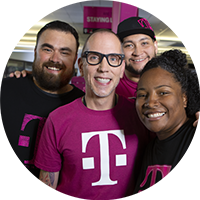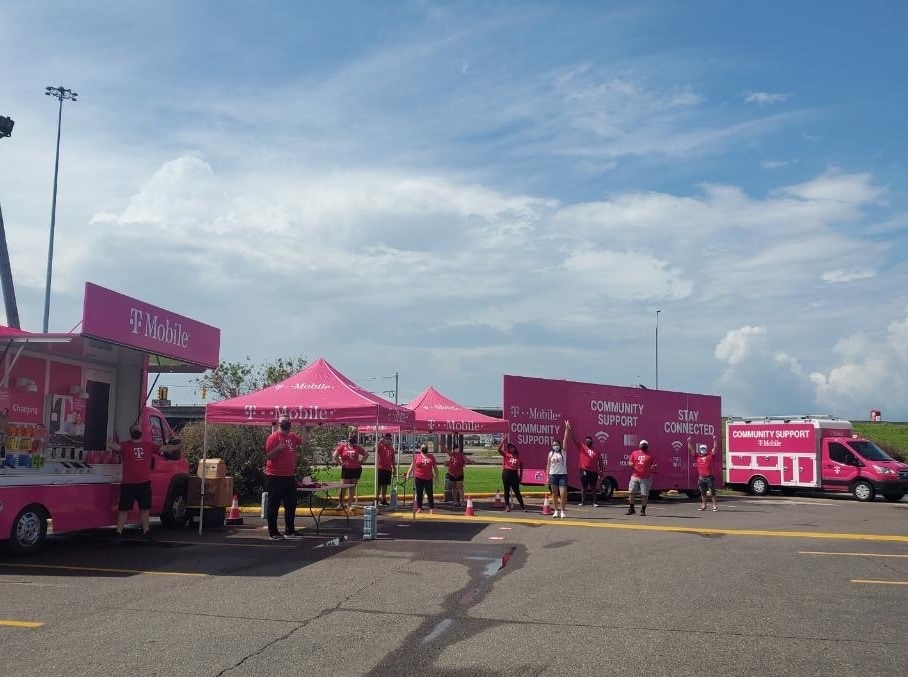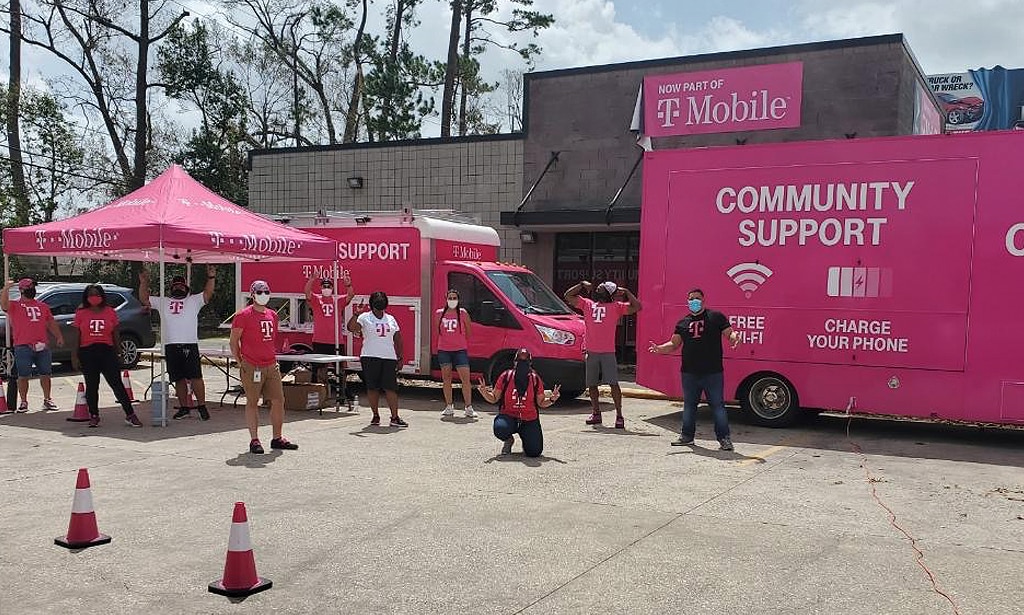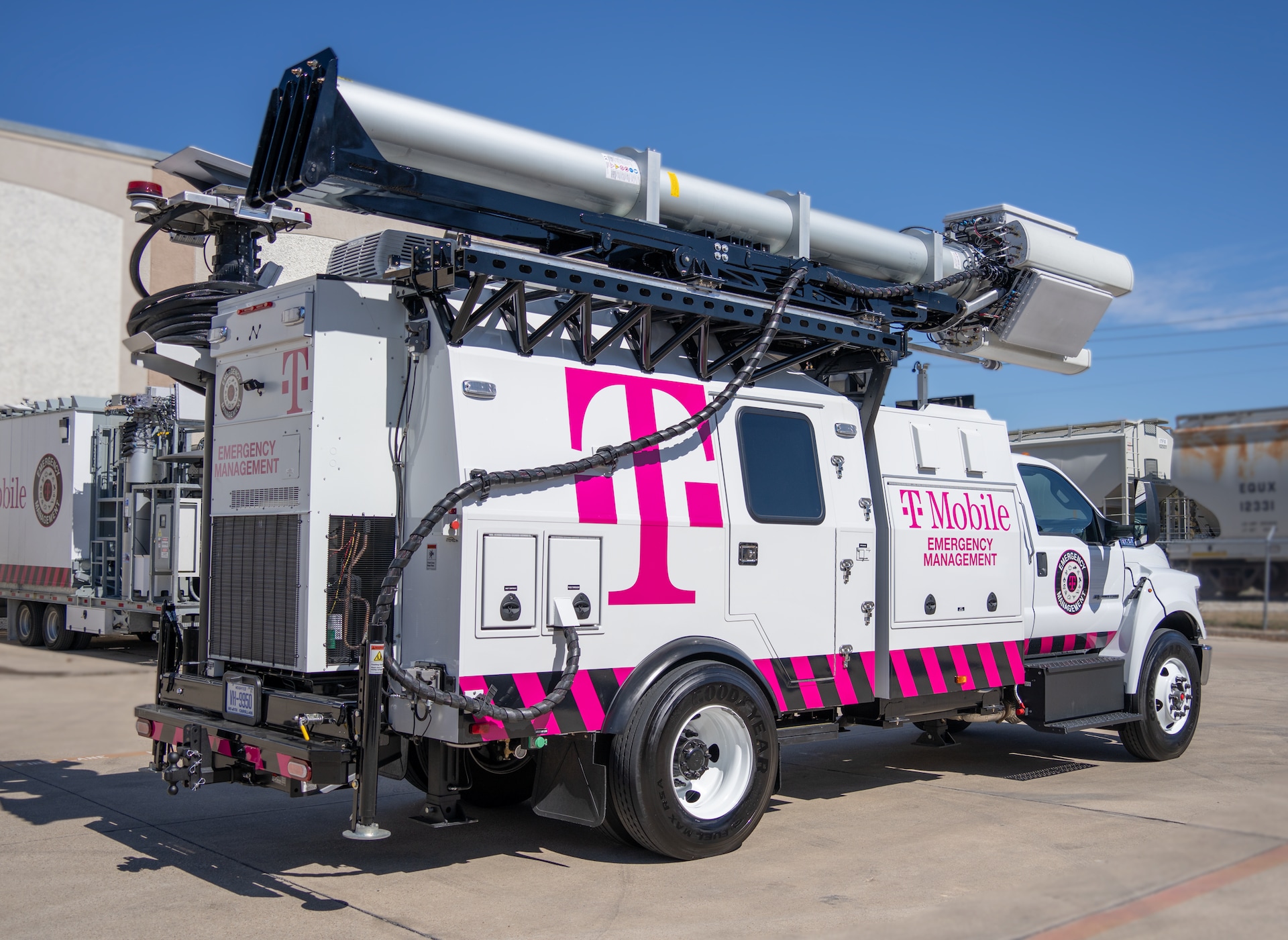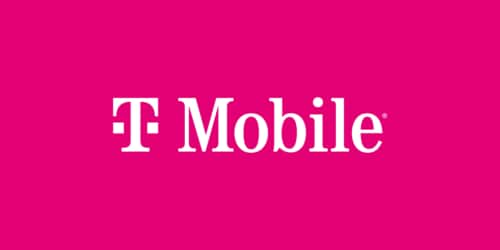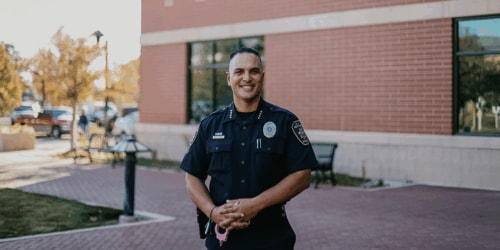Among T-Mobile’s crisis-response specialists, this time of year is known as “disaster season” — the stressful weeks at the end of summer and beginning of fall when hurricanes threaten America’s Gulf and Atlantic states, and wildfires typically devastate communities across the American West. And though COVID-19 has changed the way the world operates at a fundamental level, it hasn’t stopped those disasters from coming. In fact, 2020 has turned out to be one of the most demanding disaster seasons in memory, with millions and millions of acres burning in California, Oregon and Washington, while multiple major storms wrecked the entirety of Louisiana … all as the pandemic has completely altered the way disaster relief can be deployed in troubled areas.
In the face of oncoming storms or wildfires, T-Mobile stores must sometimes be closed and alternative retail options must be established. In the aftermath, customers often need emergency connectivity solutions until permanent services and devices are restored. These assistance efforts are led by two T-Mobile superstars: Becky Romero, a senior disaster recovery manager, and Stephanie Kehoe, a senior manager of field operations. Between the two of them, they are the community response team, “small but mighty,” according to Stephanie, covering the preparation, adjustment and deployment — anything non-network-related — of disaster relief from the consumer markets standpoint. They’ve also been adapting to changing pandemic protocols to ensure the safety of their employees and their customers.
“We call each other Batman and Robin,” Becky says.
“One day I’m Batman and she’s Robin,” Stephanie adds. “The next day it’s the other way around. We just work it together.”
When Hurricanes Laura and Sally pummeled Louisiana within a couple weeks of each other from August to September, and wildfires ravaged the entire West Coast, they had (to put it mildly) a hectic month. But, like Becky says, “When we’re dealing with 2020, you gotta find that silver lining wherever you can!”
Stephanie’s key responsibility is managing a nationwide fleet of 15 trucks, 11 dedicated to community response and four mobile store replacements. Becky’s role is to keep the trucks stocked with connectivity supplies that her team hands out to communities for free use for up to 30 days. Both are working remotely right now, leading teams deployed across the U.S. — Stephanie from the greater Philadelphia area and Becky in Texas.
“I’m in Houston,” Becky says, “but my brain is in California, Oregon, Washington, Utah, Colorado, Louisiana, Alabama, Mississippi, Florida.” She adds: “If you’re 30 miles from a fire, you’re not in a bad position, but if you get a knock on the door at 6 AM saying your house is in danger, you grab your children and dogs and run out of the house.”
So you might leave behind your phone, or maybe your charger or tablet. Those are the items — along with mobile hotspots for getting online — that her team provides. Normally that means setting up trucks within impacted communities, usually at local shelters or relief facilities, the moment the area is declared safe, and then staying as long as needed. But, of course, that strategy has had to adjust to rules banning crowds of more than a few people congregating in one place due to coronavirus concerns.
While Stephanie and Becky singlehandedly developed T-Mobile’s disaster relief program from the get go, they have also assembled a cohort of trusted teammates on the ground.
In Lake Charles, Louisiana, which was ravaged by Hurricane Laura, one of the worst storms in state history, their staff has been posted up for weeks and is planning to stay indefinitely. All the while, following socially distant measures due to COVID is top of mind. Rather than letting people come to them, they’ve been minimizing contact and mitigating crowds by distributing items to shelters in individual care packages. They’ve provided the same response in California since wildfires there took off in August.
“We’ve had to challenge ourselves to think, ‘How do we still supply the community while minimizing risk?’ It was not easy,” Stephanie says. “We came up with the drop-off supply solution. Instead of standing with a table or tent and trucks and going inside shelters to crowds gathered, we put pieces in place to have contactless support. We do prep work to determine needs at each shelter to provide care packages to them. Some people need WiFi; if power is out, they need more charging capabilities.”
The contactless solution has been a great success, she says, both in terms of direct benefit to customers and in keeping the process safe: “We developed processes to ensure trucks are regularly cleaned and employees are getting temperature checked and washing hands and sanitizing assets around them. We’re taking steps to keep everyone safe. We have a number of PPE supplies in the trucks and we take it one shelter and one support activity at a time.”
Along with relief trucks, Stephanie also has four retail replacement trucks at her disposal. When a brick-and-mortar store is damaged or destroyed by a natural disaster, she’ll roll out a retail truck-and-trailer combo into that community to ensure customers have access to the devices and services they need.
“If a store and a truck had a baby, that’s our trailers,” she says. “We can replace a structure with one of our replacement stores within a week.”
The only way she and Becky can accomplish so much work in so little time is by coordinating efforts on both the logistical and practical levels.
“We say it takes a special kind of person to do this job,” Becky says. “You gotta have the passion but you need to understand how to triage. Everyone thinks the world’s coming down but it’s not. Our job is to provide confirmation that we’re gonna get through this. And this is how, this is the process. It takes a person with drive to support but you can’t get frustrated and beat down.”
Says Stephanie, pointing out just how essential it’s been to collaborate with Becky for this disaster season’s relief effort, “It’s not a Stephanie effort, it’s a total team effort. I can’t give trucks to Becky’s group because it just wouldn’t work, she has her own mountains to lift. We’re in lockstep hourly it feels like.”
“I don’t think anyone was prepared for the amount of disaster we’re facing,” she continues. “Everyone supporting the disasters is tired. But the need doesn’t stop, and neither does the work.”
